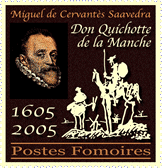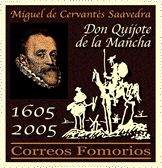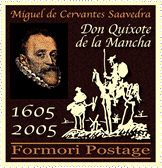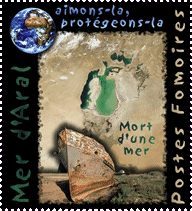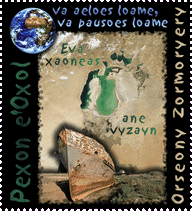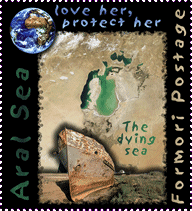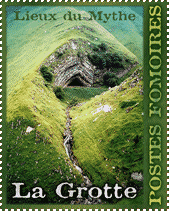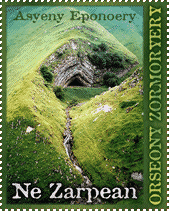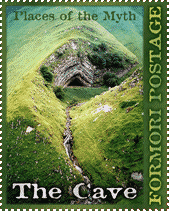ForewordAlthough it has neither its own currency nor any proper postal service, during Summer 3508 (2001), the Formori Community decided to set up a philatelic service in charge of issueing commemorative stamps with no postage value. These 'e-stamps', designed only to be published as graphic files, are used mostly to add a 'Formori touch' to e-mails sent by the members of the community. No actual printing of these stamps is planned for any use outside of the Internet. How to use Formori e-stamps? The e-stamps shown in this section are free for use. To place them inside an e-mail, you can either download them on your hard drive and paste them in your e-mail as any other picture, or place a link to their location on this site directly within your message. In case of any problem, feel free to contact us . |
![]()
Series |
Topic |
||
![]()
3511-04 Series
|
On January 16, 1605 (3111-303), a little-known 57-year old writer, Miguel de Cervantes Saavedra, publishes the first part of a novel, which will mark amilestone in the story of literature: "The Ingenious Hidalgo Don Quixote de la Manche". Some 1,200 copies are proposed for sale in the bookshops of Madrid and the book is an immediate success. It is the first "best-seller" in the history of publishing.
Born in 1547 (3056), son of a Castilian surgeon covered with debts and a reconverted Jew, Miguel de Cervantes lead himself an adventurer's life, which recalls that of his main character. At 22, he is hired by cardinal Acquaviva, the pontifical legate, and goes to Rome before joining the Holy League to fight at the Battle of Lepanto against the Ottomans, in 1571 (3080). There he loses his left hand. Later captured by pirates, he is taken as a slave to Algiers, where he lives for five years before before being bought back by Trinitarian friars for 500 crowns. Free again, he gets married and settles in Seville where he is appointed as supply intendent for the galleys of king Philip II who is preparing the Spanish Armada to invade England. It is at that time that he begins to write, but his involvement in traffics brings him into jail on several occasions.
The publishing of Don Quixote brings to Miguel de Cervantes a notoriety that expands way beyond the Hispanic world, but no profit, as he had sold his piblishing rights in advance. British translations are available as soon as 1612 (3119), and French versions two years later. The second part of the novel is published in 1625 (3132) only. In the meantime, Miguel de Cervantes had died on April 22, 1616 (3123-34), the very same day as William Shakespeare!
According to Unesco, Don Quixote, considered by many as the first "modern novel", is today the most translated book in the world after the Bible and before the complete works of Lenine.
For the Formoris, the character of Don Quixote - a noble-hearted naive man obsessed by tales of chivalry who decided to look for adventure and become a defender of the weak and the oppressed - is the perfect illustration of the excentric and courageous herowho refuses the limits imposed by the outer world and rationality. Don Quixote does not see the world as it is but as he wishes it was and, in his own way, by pityful means and despite mockery, he tries to make it better.
For the quadricentennial of the first publishing of Don Quixote, the Formori Institute releases a quadrilingual series of stamps (French, Formori, Castilian and English), which associates a portrait of Miguel de Cervantes to one of the most famous illustrations of Don Quixote and his squire Sancho Pança, drawn in 1955 (3459) by famous painter Pablo Picasso.
![]()
3511-03
Series
|
On the Day of the West of the Month of Honey (November 1st, 2004), Cannelle ("Cinnamon"), the last she-bear of the Pyreneans, was shot by a hunter during a beat for wild boars. Following her death, there is no further indigenus she-bear left in these mountains of the Formori hinterland , since all the other she-bears spotted in the massif are of Slovenian origin. Even if there are still some she-bears on the Spanish side, there are only males on the French side and the race of the Pyrenean bear is virtually extinct here.
It is awful to notice that the race of the bears, which proliferated in these moutains at the time of the ancient Formoris, is now, like them, dead and gone. It is even worse as the hunters, who claimed self-defense against the she-bear who tried to protect her cub (which was able to escape), were actually conducting an illegal hunt in a "preserved area". We know from good source that this was not the first time they did so. For years, local hunters have been monitoring the displacement of the bears. Not to avoid them but to spot the areas, abounding in game, where they tend to settle in order to conduct illegal hunts there. The death of Cannelle thus results not from an infortunate accident but from a characterised poaching activity.
As a tribute to Cannelle and to denounce the ecological disaster it represents, the Formori Institute publishes a trilingual series illustrated by one of the very few available pictures of Cannelle, then followed by one of her previous cubs.
![]()
![]()
3511-01
Series
|
The patron of the Formoris, Môri, lives where the elements meet, in enchanted caves opened on the depths of the Earth, near magical springs, where the mountains join the skies. One of the most famous and beautiful of these caves is located beyond the Orion Forest, the remain of a mythical forest where the "Trout River" has its source and where young Formoris came to accomplish their ritual initiatory hunt.
It is during one of these hunts that the young Ysor met Môri, at the entrance of this cave, and from their union, the Morigaen was born.
This cave is also said to be one of the entrances to the "world below the mountains" where were laid the last defenders of Bara, recovered from the battle field by their wives, their mothers, their sisters and their daughters, in the evening after the fall of the city.
Long after the Formoris disappeared, the Basques who dwelled in the region made no mistake and called the cave "Harpea," which means nothing less than "The Cave."
This trilingual series (French, English and Formori) showing the Formoris' holy Cave is the first of a new collection dedicated to the famous sites linked to the Formori myth. This series is illustrated with a photograph taken in 2000 (3507) by the Yg Ysca ta Anthor expedition. The site of the Cave had then been identified by Osemy yg Anthor, close to the Orgambide pass, on the border between France and Spain, which was drawn through the fields and the hills without the least respect for logic and topographic markings. The Cave, surrounded by a bed of nettles and a grove of elder trees (Anthor), now serves as a protected fold for sheep.

